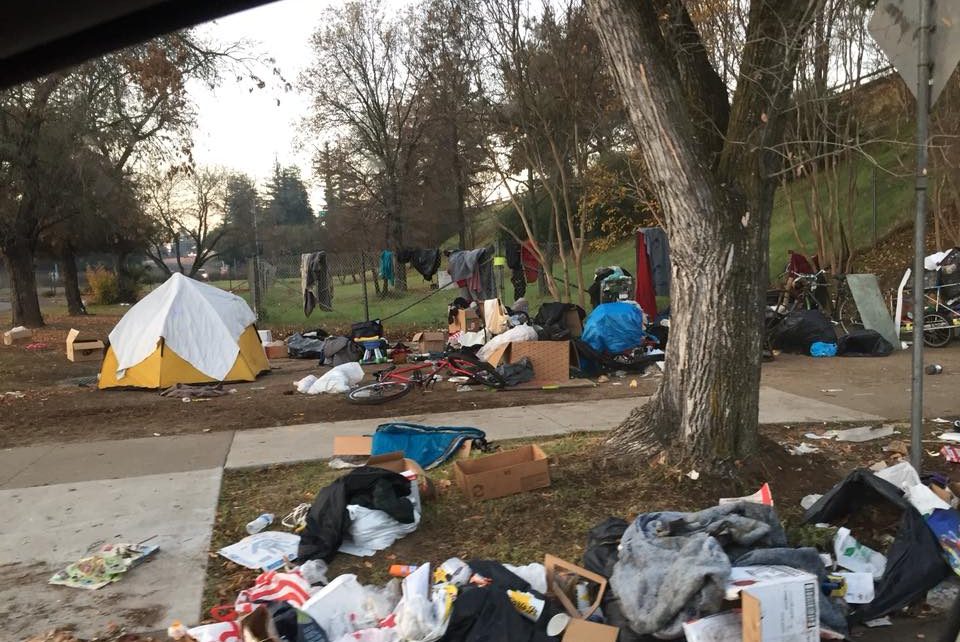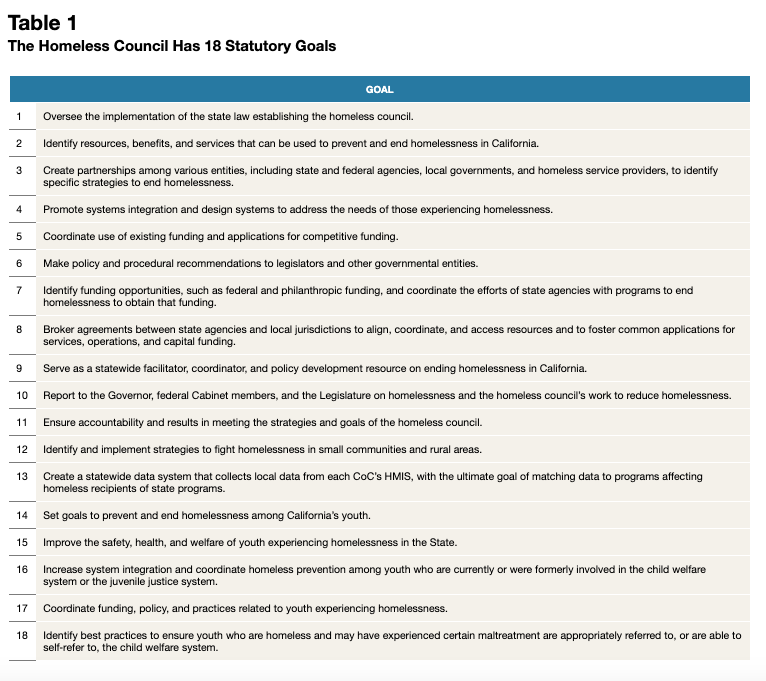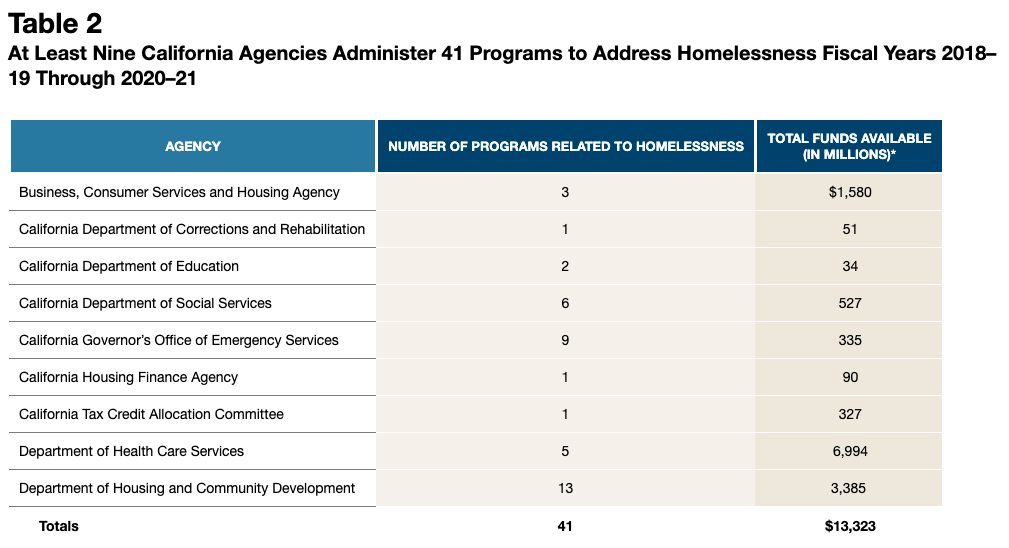
Sacramento homeless. (Photo: Katy Grimes for California Globe)
State Auditor Releases Scathing Audit of the Failure to Mitigate Homelessness in California
‘CA has the largest homeless population in the nation, but its approach to addressing homelessness is disjointed’
By Katy Grimes, February 18, 2021 12:43 pm
California State Auditor Elaine Howle recently released a rather scathing audit of the management or mismanagement of Homelessness in California. She said that the state continues to have the largest homeless population in the nation “likely in part because its approach to addressing homelessness has been disjointed.”
In her cover letter to the Governor, President pro Tempore of the Senate, and Speaker of the Assembly, Howle said “At least nine state agencies administer and oversee 41 different programs that provide funding to mitigate homelessness, yet no single entity oversees the State’s efforts or is responsible for developing a statewide strategic plan.”
The state’s plan to mitigate homelessness is not designed to achieve this, as the audit shows. Because if the 9 agencies and 41 different programs were, they would no longer be needed, the federal and state funding would dry up, and public employee union jobs would be lost. In California, no program ever sunsets.
“The State continues to lack a comprehensive understanding of its spending to address homelessness, the specific services the programs provide, or the individuals who receive those services.”
“Our audit found three additional factors that make state guidance to coordinate efforts to address homelessness especially necessary:
- CoCs do not always employ best practices related to identifying, planning for, and providing services for those experiencing homelessness.
- None of the five CoCs we reviewed has adequately determined whether it has enough service providers to meet the needs of those experiencing homelessness.
- Two of the five CoCs we assessed do not have current comprehensive plans.”
In May 2019, Gov. Newsom announced the formation of the Homeless and Supportive Housing Advisory Task Force and its co-chairs Sacramento Mayor Darrell Steinberg and Los Angeles County Supervisor Mark Ridley-Thomas, “two city leaders from cities ravaged by homelessness, filth, and disease,” the Globe reported.
Just the year before in 2018, a United Nations expert on housing singled out Oakland and San Francisco in a report as the only two U.S. cities which are part of a “global scandal,” saying the homeless encampments are “cruel and inhumane,” after visiting the Bay Area in January, KTVU Fox reported. In the same report the Special Rapporteur says “residents of informal settlements affirm humanity in the most inhumane circumstances. The Special Rapporteur has visited many informal settlements in the global North and South. She has found the severity of the living conditions and the failure of States to respond to them profoundly disturbing.”
California has spent $13 billion in just the last three years on the massive homelessness problem. The auditor said the approach to dealing with homelessness is so fragmented and incomplete it actually hinders efforts at getting people into stable housing.
“Last year, Newsom vetoed a bill that would have created a uniform data-collection system on homelessness spending, saying the measure was duplicative and would create additional and unnecessary data collection costs,” KCRA Channel 3 reported. However, the auditor found a lack of coordination between agencies, and largely, no accountability by any agency our the task force.
Some highlights from the audit:
- In recent years, the number of individuals experiencing homelessness in California has soared. More than 151,000 Californians were homeless in 2019, an increase of 15 percent from 2017.
- Unlike in some other states, no single state entity in California oversees efforts to address homelessness or is responsible for developing a statewide strategic plan. Instead, at least nine state agencies administer and oversee 41 different programs that provide funding for purposes related to homelessness.
- Despite creating the Homeless Coordinating and Financing Council in 2017, homeless council staff stated that the council has not set priorities or timelines for achieving all 18 statutory goals (below). Further, the homeless council still has not finalized an action plan that homeless council staff believe will serve as the council’s strategic plan, and has yet to fulfill some of its most critical goals.
- Council staff said they can request information from state agencies, but it does not currently have the authority to require this information from other state agencies and has not been able to track program spending to date.
“In September 2019, the Governor signed a package of 13 bills addressing homelessness, including Senate Bill 211, which authorizes the California Department of Transportation to lease certain property to local governments for temporary emergency shelters or feeding programs, and Senate Bill 450, which exempts certain hotels converted to supportive or transitional housing from the requirements of the California Environmental Quality Act until January 1, 2025,” the Auditor reported. “In January 2020, the Governor signed an executive order that focuses on preventing homelessness, providing shelter and services to people experiencing homelessness, and creating new temporary housing to reduce unsheltered homelessness. This executive order calls for, among other things, a multiagency state strike team to provide technical assistance and direct support to counties, cities, and public transit agencies seeking to bring people experiencing homelessness indoors and connect them with appropriate health, human, and social services.”
The auditor said the homeless council staff reported that the homeless council has not formally gone through the process of prioritizing the 18 statutory goals.
Homeless council staff claims they need many more staff positions to fulfill some of its most critical responsibilities, despite already having 24 staff positions available due to the Legislature appropriating an additional $1.5 million to add 10 more staff in fiscal year 2020–21, bringing its operating budget to about $3.4 million, to carry out its statutory mandates.
“According to homeless council staff, the homeless council likely still lacks the necessary resources to be able to address all of its statutory goals.” However, the Auditor said more funding isn’t automatic, and, “the Legislature should require the homeless council to conduct an analysis to determine its budgetary needs for implementing any new statutory requirements.”
The state does not track the funding it provides to combat homelessness, which could be perhaps the biggest problem of all. “There is no single state entity that comprehensively tracks the sources of funding, the intended uses, or related expenditures for these programs,” nor does the state “track how much funding is available or spent toward addressing homelessness statewide.”
Additionally, “the homeless council has not prioritized coordination of existing funding and applications for competitive funding,” the auditor reported. “We believe that it [the Council] is well positioned to track the State’s sources of funding and spending on homelessness activities and make informed recommendations to decision makers to ensure proper coordination among different programs.”
The auditor said her office reviewed a number of other states which have charged a single agency with addressing homelessness statewide and tracking funding information centrally. “These other states have fared better than California in stemming the number of people who experience homelessness.”
The second part of the audit focused on the Continuum of Care organizations (CoCs), which “do not consistently employ best practices to improve homeless services in their areas.”
“The five CoCs we reviewed do not adequately conduct a comprehensive annual gaps analysis,” the Auditor reported. And two of the CoCs don’t even have current comprehensive plans. “Federal regulations require each CoC to have a plan in place to conduct an annual gaps analysis to determine whether the number and type of current services and service providers in its area are adequate to meet the needs of all the people it has identified as experiencing homelessness.”
Because of this, some homeless are struggling to access services because of gaps in the CoCs’ coordinated entry processes.
The Auditor makes a long list of recommendations, which frankly should already have been a priority for the county Continuum of Care organizations if they are truly focused on the goal of reducing homelessness by providing assessments and proper services for those they are tasked with helping. However, the audit does not state the obvious: if these five CoCs were to successfully reduce homelessness in California, they would work themselves out of jobs and the funding would dry up.
In California, state employment is a behemoth limitless jobs program, regardless of the mission of the state agency. And this is why only charities and non-profits unattached to government should be managing and helping the state’s homeless get assistance for a path to recovery.
- Sacramento Taxpayers Pay for Mobile Veterinary Clinic for Homeless Drug Addicts’ Pets - July 26, 2025
- Ninth Circuit Kills California’s Ammo Background Check Law: Here is the Decision – and the Dissent - July 25, 2025
- What it Costs to Buy a House in America: California’s Median Price is $790,000! - July 24, 2025










No mention of the actual problem, which is ADDICTION. I heard the director of 3 different Los Angeles area homeless shelters speak a few years back and he said if he sees 10,000 homeless people in a year there won’t be more than one or two that are not addicted to some sort of substance. Since the problem is addiction, why not at least mention it
We have covered the homeless crisis in California extensively and always address drug addiction and mental illness at the root of the issue. This article is only about the auditor’s report.
There is simply no other newspaper in the state of California — and possibly beyond — that has covered the homeless/vagrant issue as thoroughly and truthfully, in all its aspects, as The California Globe. Most notably Katy Grimes has reported on it, but also Edward Ring (“The Homeless Industrial Complex,” etc.) and a number of other fine reporters and writers have shone a bright spotlight on this scourge for the past two years. In addition, they have called out those responsible for its needless continuation, and in general have succeeded in educating Globe readers to see that all is not as it appears to be or as it has been sold to California citizens and voters for as long as it has been a serious and terrible problem in this state.
Suggest you go to the Search feature and type in “homeless” and, separately, “homelessness” and you will see for yourself. Even then I suspect you will not see every article that has been written about this but will have more than enough to keep you busy for awhile.
And now, almost two years after this nightmare hit critical mass, and with The Globe covering it every step of the way, the homeless/vagrant situation has only worsened in spite of the billions of dollars thrown at it. That in itself — if you ask me — is proof of what Katy Grimes has pointed out above:
“The state’s plan to mitigate homelessness is not designed to achieve this, as the audit shows. Because if the 9 agencies and 41 different programs were, they would no longer be needed, the federal and state funding would dry up, and public employee union jobs would be lost. In California, no program ever sunsets.”
We’re going to end up with the worst of all worlds:
1) A new state agency and bureaucracy tasked with providing services for the homeless – with its own brand new budget.
2) The Homeless Counsel will remain in place, and its budget, and staff will continue to swell.
3) The Nine State Agencies will continue to operate the 41 programs that impact homelessness, and seek increased funding and staffing to do so.
No state agency ever goes away – it may morph into a new name, but the institutional culture will remain, and the unending demand for more funding will continue.
LA talk radio often suggests that all the $$$ goes to paying the salaries of directors of programs, tradesmen doing construction of or renovations of buildings, inspectors monitoring that work, etc. The Homeless Industrial Complex. They always come up short at the end because no one wants to do the icky work — 24/7 monitoring and “servicing” that population to give them the help they need. Heck, you can’t find enough solid folks to work with a relatively normal population in schools, how are you going to find folks with the required degrees to live among and work with the mental, addicted, and often violent? I live near Victorville, which just approved construction of a large campus to serve and house “the unsheltered”. 3 years after they did the same for renovations of the foreclosed Queens Motel… remodeling completed, but it never got staffed, never opened. Funny how that works.
Handing out free needles, Hotel rooms, food supply, bathroom business anywhere you want, etc
Its like free advertising for addicts to never leave homeless as its all handed to them.
I work with the “homeless” everyday. I can tell you that MOST are homeless by choice and enjoy it. I have had many of them tell me I should try the drugs they themselves do – because its so great. They love being high and they love being outside and on the move. If you gave them an apartment for free – they wouldn’t want it. As far as the mental health issues – its 99% of the time due to long term continued drug use. When you pump hard drugs into your body and brain over years and years – SURPRISE! You get brain damage and psychological problems. There is no curing addiction – it can only be managed. And I promise you – go talk to a few yourself – the “homeless” are not interesting in quitting the drugs. Everyone who disagrees with me – that’s fine – but if you are such a empathetic person – go on the street and talk with these people for a few days. I do it most every day – I am speaking from years of personal experience here in Southern California
I am in HMIS data systems work and have been seeing the management downfalls around and about for years. Not pointing a finger at the State alone because the issues noted in Continuum of Care structures really should take a look at HUD who owns that program. Their response to fix my community’s CoC has been doggedly slow as things spun out of control by elected officials who thought they could take the management of homelessness on. Unless you work in this world, the average person has little understanding of how the political barriers impact any movement toward improvement including getting clients into service.
California State Auditor Elaine Howle should run for Governor. In next Spring’s election.